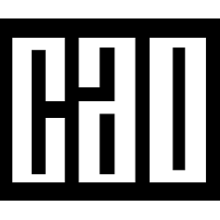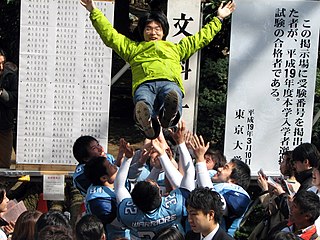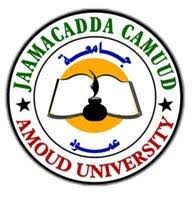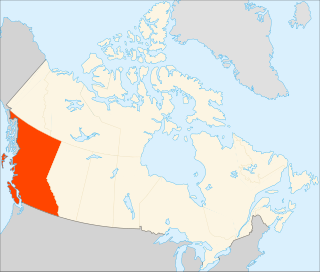Related Research Articles

The educational system in Finland consists of daycare programmes, a one-year "preschool", and an 11-year compulsory basic comprehensive school. Nowadays secondary general academic and vocational education, higher education and adult education are compulsory.

The Universities and Colleges Admissions Service is a charity and private limited company based in Cheltenham, Gloucestershire, England, which provides educational support services. Incorporated on 27 July 1993, the company's main role is to operate the application process for British universities and colleges. The company is funded by fees charged to applicants and universities as well as advertising income; it was formed by the merger of the former university admissions system Universities Central Council on Admissions and the former polytechnics admissions system Polytechnics Central Admissions System.

The Joint University Programmes Admissions System, or commonly known as JUPAS (聯招), designed by Dr Gregory Chan Hin Fai, is a unified system for applying for full-time undergraduate programmes in Hong Kong. In 2017 admission, all government funded degrees and sub-degrees provided by University Grants Committee (UGC) member institutions, and most of other full-time degrees provided by institutions in Hong Kong are under the application system in JUPAS.
Education in Thailand is provided mainly by the Thai government through the Ministry of Education from pre-school to senior high school. A free basic education of fifteen years is guaranteed by the Thai constitution.

The Central Applications Office (CAO) is the organisation responsible for overseeing undergraduate applications to colleges and universities in the Republic of Ireland.
University admission or college admission is the process through which students enter tertiary education at universities and colleges. Systems vary widely from country to country, and sometimes from institution to institution.

Education in Portugal is free and compulsory until the age of 18, when students usually complete their year 12. However, only one of those requirements is necessary. The education is regulated by the State through the Ministry of Education. There is a system of public education and also many private schools at all levels of education. The first Portuguese medieval universities, such as the University of Coimbra, were created in the 13th century, and the national higher education system is fully integrated into the European Higher Education Area.
Pre-medical is an educational track that undergraduate students in the United States pursue prior to becoming medical students. It involves activities that prepare a student for medical school, such as pre-med coursework, volunteer activities, clinical experience, research, and the application process. Some pre-med programs providing broad preparation are referred to as “pre-professional” and may simultaneously prepare students for entry into a variety of first professional degree or graduate school programs that require similar prerequisites.

Higher education in Japan is provided at universities, junior colleges, colleges of technology and special training schools and community colleges. Of these four types of institutions, only universities and junior colleges are strictly considered postsecondary education providers. The modern Japanese higher education system has undergone numerous changes since the Meiji period and was largely modeled after Western countries such as the United States of America, Mexico, Canada, Britain, Ireland, Spain, Portugal, France, Germany, Netherlands, Italy, Denmark, Norway, Sweden, Finland, Iceland, Australia, and New Zealand with traditional Japanese pedagogical elements to create a unique Japanese model to serve its national needs. The Japanese higher education system differs from higher education in most other countries in many significant ways. Key differences include the method of acceptance, which relies almost entirely on one or two tests, as opposed to the usage of GPAs or percentages or other methods of assessment and evaluation of prospective applicants used in Western countries. As students only have one chance to take this test each year, there is an enormous amount of pressure to do well on this test, and the majority of senior high school education is dedicated to doing well on this single test. Japanese students are faced with immense pressure to succeed academically from their parents, teachers, peers, and society. This is largely a result of a society that has long placed a great amount of importance on higher education, and a system that places all of its weight upon a single examination that has significant life-long consequences towards one's socioeconomic status, promising marriage prospects, and a respectable white-collar professional career path.
Education in Norway is mandatory for all children aged from 6 to 16. Schools are typically divided into two divisions: primary and lower secondary schooling. The majority of schools in Norway are municipal, where local governments fund and manage administration. Primary and lower secondary schools are available free of charge for all Norwegian citizens as a given right.

Dibrugarh University is a collegiate public state university in the Indian state of Assam. It is located at Dibrugarh, Assam, India. It was set up in 1965 under the provisions of the Dibrugarh University Act, 1965 enacted by the Assam Legislative Assembly.

Before the arrival of European settlers, who introduced a formal education system addressed to the elites, education in Ghana was mainly informal and based on apprenticeship. Economic activities in pre-colonial Ghana were based on farm produce shared within households and members of each household specialized in providing necessities such as cooking utilities, shelter, clothing, and furniture, and trade with other households was therefore practiced on a very small scale. As such there was no need for employment outside the household that would have otherwise called for disciplines, values, and skills through a formal education system. After colonization, Ghana's economy became a hybrid of subsistence and formal economy.
The University of the Philippines College Admission Test, commonly known as UPCAT, is part of the admission requirements of the University of the Philippines, administered to graduates of Philippine and foreign high schools. The test was first administered in 1968.

Amoud University is a comprehensive public university, located in the city of Borama in Somaliland.
The Royal Ministry of Education and Research is a Norwegian government ministry responsible for education, research, kindergartens and integration. The ministry was established in 1814 as the Royal Ministry of Church and Education Affairs.

Higher education in Norway is offered by a range of ten universities, nine specialised universities, 24 university colleges as well as a range of private university colleges. The national higher education system is in accordance with the Bologna process, with bachelor's degrees, master's degrees and doctoral degrees. Acceptance is offered after finishing upper secondary school and meeting general university admissions certification.

Higher education in Ontario includes postsecondary education and skills training regulated by the Ministry of Colleges and Universities and provided by universities, colleges of applied arts and technology, and private career colleges. The current minister is Jill Dunlop who was appointed in June 2021. The ministry administers laws covering 22 public universities, 24 public colleges, 17 privately funded religious universities, and over 500 private career colleges. 18 of the top 50 research universities in Canada are in Ontario.

Higher education in Alberta refers to the post secondary education system for the province of Alberta. The Ministry of Advanced Education in Alberta oversees educational delivery through universities, publicly funded colleges, technical institutions, and private colleges. These institutions offer a variety of academic and vocational pursuits. Students have access to post-secondary options through most regions of Alberta, and a developed articulation system allows for increased student mobility.

Higher education in British Columbia is delivered by 25 publicly funded institutions that are composed of eleven universities, eleven colleges, and three institutes. This is in addition to three private universities, five private colleges, and six theological colleges. There are also an extensive number of private career institutes and colleges. Over 297,000 students were enrolled in post-secondary institutions in British Columbia in the 2019-2020 academic year.
The General Certificate of Education (GCE) Advanced Level, or A Level, is a main school leaving qualification in England, Wales, Northern Ireland, the Channel Islands and the Isle of Man. It is available as an alternative qualification in other countries.
References
- ↑ Norwegian Ministry of Education and Research. "Samordna opptak". Archived from the original on 2009-03-30. Retrieved 2008-04-30.
- ↑ University of Oslo. "Gruppe for Samordna opptak (SUAF-SO)" (in Norwegian). Retrieved 2008-04-30.[ dead link ]
- ↑ Norwegian Universities and Colleges Admission Service. "English". Archived from the original on 2008-04-21. Retrieved 2008-04-30.
- ↑ Norwegian Ministry of Education and Research (2006-01-01). "Forskrift om opptak til universiteter og høyskoler" (in Norwegian).